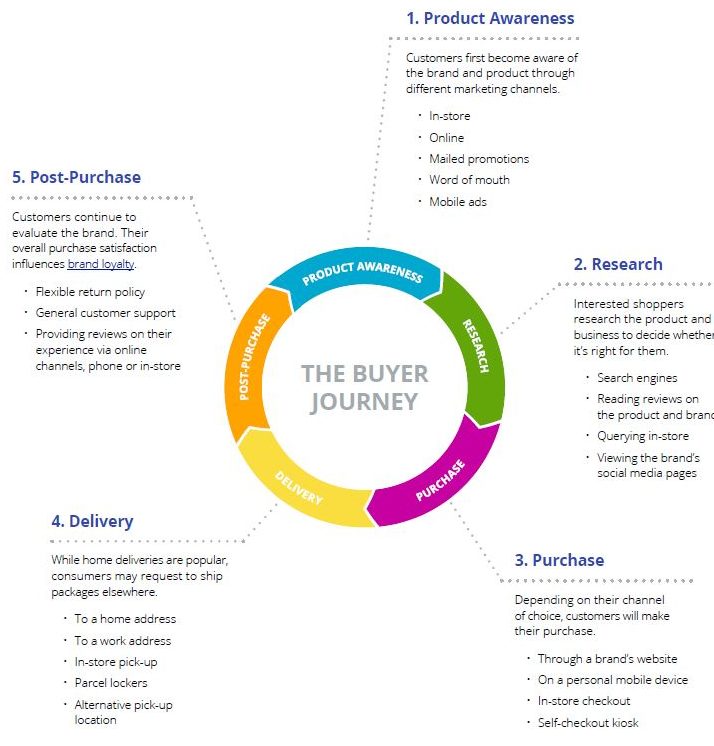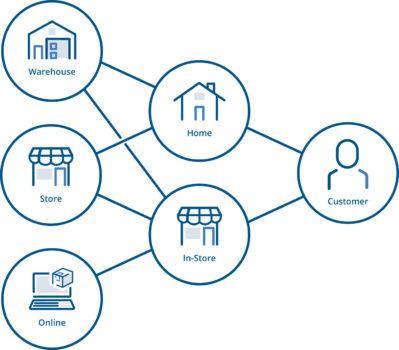Updated: February 2, 2021
The evolution of the retail supply chain has changed dramatically in the past decade, especially since March 2020 when the COVID-19 pandemic quickly spread across countries. Well before COVID-19, retail supply chains started in a single echelon approach where inventory control was isolated between each step. Then, they evolved into multi-echelon supply chains that optimized inventory across an entire network. In most recent developments, supply chains have incorporated omni-channel strategies into retail supply chains. Omni-channel supply chains provide today’s customers with a seamless shopping experience. This evolution of the retail supply chain shows that shipping systems have changed as much as the shopping experience itself.
Each of the earlier supply chain methods have their benefits, but also many downfalls. Traditional supply chain methods left customers with limited options for delivery times, and longer journeys to receiving a final product. With the introduction of today’s omni-channel supply chain, customers can rely on a standardized delivery service whether they choose to shop on their laptops, mobile devices, over the phone or in-store. No matter where a customer decides to purchase, they expect to receive their product on time and without delays. Retailers who are prepared to adapt their supply chain will be able to meet this consumer expectation.
So, what’s driving the evolution of supply chain? Better yet, why should your business care? Below, we’re breaking down everything you need to know about:
- evolving retail supply chains
- how consumer buying shopping habits changed the buyer’s journey
- how your business can create an agile, omni-channel supply chain that not only meets but exceeds customer expectations
What is driving the evolution of supply chains?
The answer to why supply chains are changing is rooted in consumer behaviour. Consumers are more educated on an item before making a purchase. Consumers research brands, read product reviews and often seek feedback from word of mouth before making a purchase. Advancements in technology, the rise of e-commerce and COVID-19, has changed the entire shopping experience. This change in the shopping experience has been to the benefit of shoppers. Consumers now have many channels to make a purchase. They can buy online and have it delivered, buy online and pick up in store (BOPIS) or use curbside pickup. Now, the buyer journey can be a cyclical experience. But as consumers take their buying journey into their own hands, they can also enter the buyer’s journey at any stage making it important to create an omni-channel experience with brand consistency. Below are the five stages of the customer shopping journey within an omni-channel experience.

Businesses – especially retail and consumer packaged goods (CPG) brands – are competing for various market spaces, including- brick and mortar, online, social and mobile channels that must all work together to create a seamless end-user experience. With so many products and shopping methods to choose from, consumers now expect an ultra-personalized omni-channel experience throughout the entire buyer journey. This means personalizing the consumer experience from the moment a customer decides to start shopping, when they decide to make a purchase, all the way to the day they receive their package at home.
Additionally, retailers and CPG brands can benefit from using an omni-channel supply chain combined with consumer shopping data to create an ultra-personalized experience. By capitalizing on the data about customer shopping habits, retailers can better understand what customers like and don’t like, and curate shopping experiences for each individual customer. To make personalization a priority is to make customers a priority. In turn, retailers will see an increase in sales and brand loyalty.
What are some of the ways a supply chain can move?
Supply chains have evolved far beyond shopping and buying all in-store. Here are some ways that today’s supply chains can keep up with consumer demands and shopping habits:
- Store to store delivery
- Online to in-store pickup
- In-store to home delivery
- Warehouse to store delivery
- Warehouse to home delivery
How can retailers keep up with evolving supply chains?
Communication and interactions between consumers and businesses are no longer one-way communications.
Ten years ago, an in-store shopper had the option to buy only what was available in that store. In all likelihood, if an item wasn’t in-stock, an associate could try and track it down at a different location and redirect the customer to the new location. This was a less than perfect shopping and buying experience for the customer because customers didn’t have buying options. They could only buy what was available in front of them or try to find it at another store. Today, buying decisions often happen in a completely different space than the final purchase. For example, a customer could see a product they like in store, then go home and search for the product online and wait another week before purchasing the item on their mobile devices. Consumers have the power of choice in their hands and are able to change their path to purchase at any given moment, and retailers need to have the supply chain readiness to fill and ship orders quickly. This reinforces the need to implement an omni-channel strategy so consumers experience a consistent brand experience across any channel they choose to use when making a buying decision.
This shift in shopper behaviour means businesses need to maintain connected with their products and sales. In order to keep up with purchases coming in from different channels, retailers need to adopt an omni-channel supply chain as well. Choosing to work with an omni-channel supply chain allows retailers to make sure their products can be shipped from various locations to make it to the end-consumer in the fastest way possible. Retailers need to adapt their businesses and shipping methods to mirror the way that supply chains can move and shift depending on how a customer decides to shop.
As consumers shift their shopping and buying habits, it only makes sense for supply chains to shift and adapt to new consumer demands. Businesses can’t underestimate the complexity of making inventory available quickly. If a customer wants to order an item online rather than in-store, retailers need to not only fill that order quickly, but also ensure that the flow of inventory is not interrupted. It’s crucial for retailers and CPG brands to keep up with evolving retail supply chains athat allows for a holistic view and movement of inventory.
By working with a trusted logistics partner like Purolator, your business can instantly adapt to an omni-channel supply chain, and have your products delivered directly to your customers with speed and efficiency. To learn more about how Purolator can help your business’ supply chain needs and keep your customers happy with timely deliveries, get in touch today.

